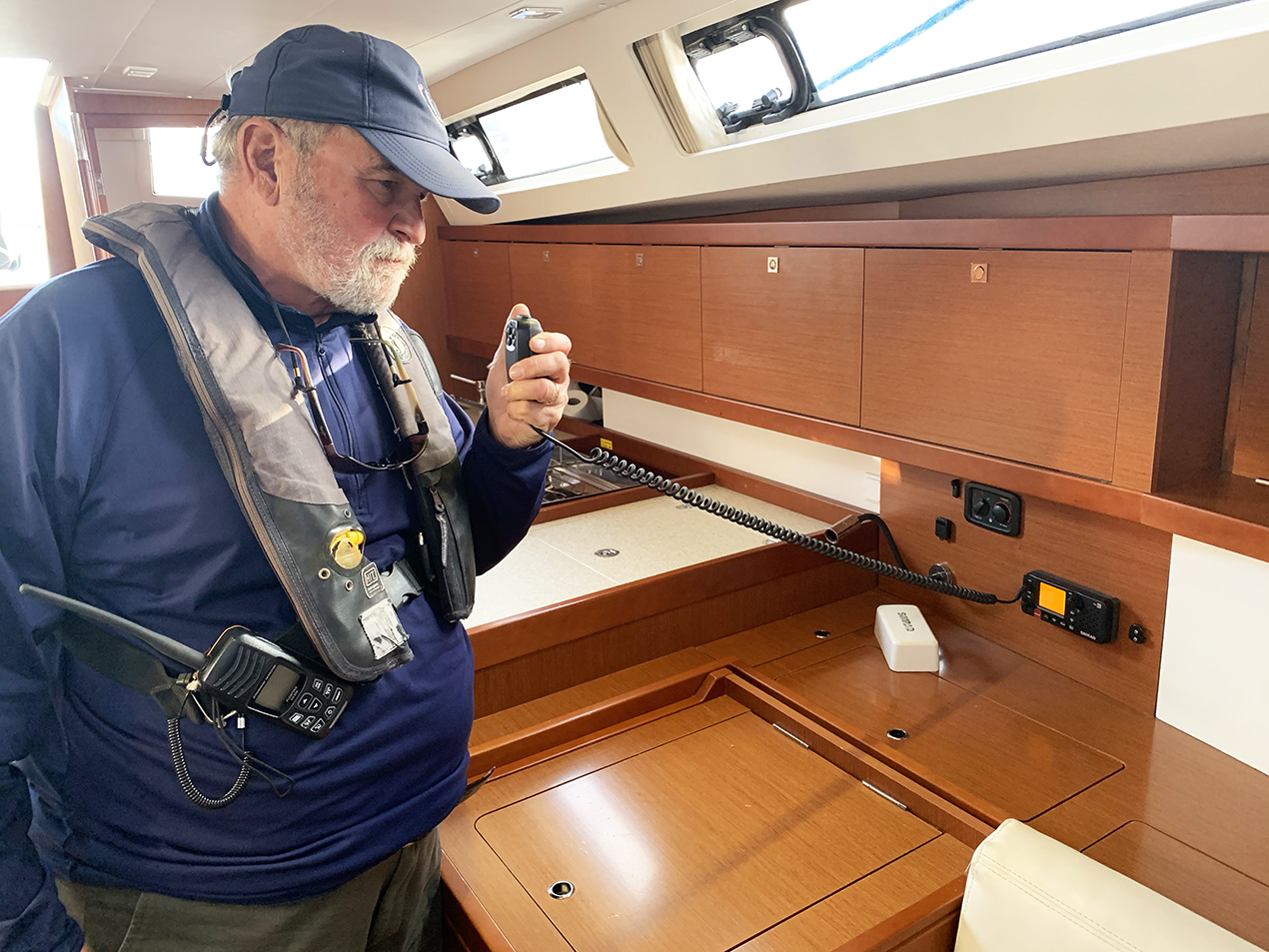
Do you know what to do should your boat's engine become disabled and there isn't enough wind to sail?
The summer wind on San Francisco Bay may be famously powerful, but in the winter and in some parts of the bay, it can be fickle! Imagine you and your crew happily sailing along until the wind disappears, leaving you and your crew bobbing along. You reach to start the engine - but it won't start. Or, you've started the engine but there's no water coming from the exhaust and/or the overheating alarm is sounding - in which case, you must immediately stop the engine to avoid permanent damage or fire.
Without propulsion, you are adrift, unable to steer the boat, and at the mercy of the tidal currents. Now what?
10 Steps to Keep Your Boat and Crew Safe Until Help Arrives
- Remain calm and keep your wits.
- Ensure all of your crew are present, accounted for, and wearing PFDs.
- Quickly assess your location, hazards, and other vessels moving around you.
- Deploy the anchor if you are drifting towards imminent danger of grounding or collision with fixed objects.
- If you are adrift in a shipping channel and a large vessel is approaching, immediately hail the US Coast Guard over VHF channel 16 as this constitutes imminent danger to your boat and crew.
- Do not attempt to anchor in a major shipping channel.
- Assign a crew member to act as a lookout to keep everyone alerted of any changes in the situation.
- Locate your air horn and have your lookout use it to warn approaching vessels with 5 short blasts if a collision seems imminent.
- Check your boat's white binder (typically stored in the navigation center) for engine starting instructions. Take a few breaths and look for any steps in the engine starting sequence that you may have inadvertently missed. Sometimes the solution is as simple as holding the glow button in a little longer (30-60 seconds). Also check the battery monitor to determine if the batteries may be drained.
- IMPORTANT: If there is no water flowing from the exhaust or the overheating alarm has sounded, do not attempt to start the engine as this may cause permanent damage to the engine or vessel. This may even cause a fire, which would create a life-threatening situation for you and your crew. Skip to Step 10 and call SeaTow for assistance.
- For troubleshooting assistance with a manager or fleet technician, call our office at (415) 331-8250 during regular business hours. Cellular service should be available all over the SF Bay. If you are near the Spinnaker Restaurant in the Richardson Bay channel, you may also call the MSC office on VHF radio channel 71. Berkeley sailors should be able to reach the office on channel 71 within a few nautical miles of the Berkeley Marina.
- If you're anchored in a minor channel and all efforts to start the engine have failed, announce a "sécurité" radio call on VHF channel 16. Alert other boats in the area that you are disabled and announce your location and/or GPS coordinates.
- Or, you may call "pan-pan," or "mayday," depending on the severity of your situation.
- If you are anchored in a location where other vessels are not likely to bump into you, there's no need to call sécurité.
- Outside of MSC business hours, call SeaTow for assistance. Every MSC boat's white binder has a SeaTow membership card with a phone number and ID number printed on it. SeaTow will tow you to safety.
- There is no need to call the Coast Guard unless your vessel and/or crew are in immediate danger. As the Coast Guard constantly monitors channel 16, they may ask you to switch to another channel and ask questions to assess your situation. Cooperate fully and politely.
- SeaTow will need to know where you are. It is helpful to provide your GPS coordinates. If your boat lacks a GPS chart plotter, launch the compass app on an iPhone. It will display your coordinates.
- Deploy fenders and ready the dock lines while you wait for your tow (if conditions are safe enough for crew to go forward on deck).
- See also Handling Emergencies Part III: Safety Under Tow.
Do you know when to use sécurité, pan pan, or mayday on the VHF radio?
Check your knowledge with this informative article from OnTheWater.com. Boating Basics: Channel 16 – Mayday, Sécurité And Pan-Pan
Learn more about responding to emergency situations such as propulsion loss in ASA 103, Basic Coastal Cruising and ASA 104, Bareboat Cruising courses. Questions about on-the-water safety? Call (415) 331-8250, email us, or stop by our office and ask to speak with one of our knowledgable captains.
Want to learn more seamanship and safety tips? Check out the Member Resources section of our website. New articles are added frequently!


